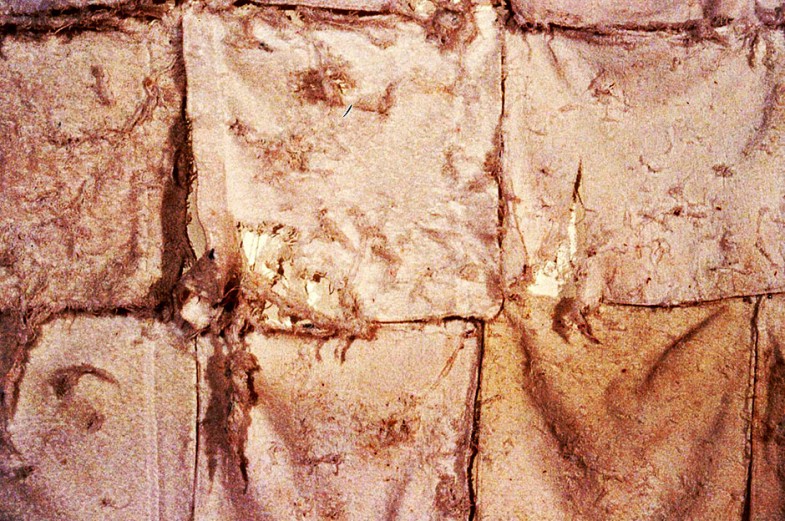Nezumi / Rat (in Japanese) represented a collaborative effort with many small friends. Nezumi was also a result of my interest in spaces that were created by animal life. The idea came from my volunteer experience at the California Wildlife Center of Marin in San Rafael. The center takes care of injured wild animals. Rats are used for captured predators. One of my volunteer jobs was feeding the rats and cleaning out their cages.
In summer 1989, there were about 50 rats at the center. Small towels were placed in the each cage to provide protection and warmth for the baby rats. The rats chewed on the towels to limit the length of their teeth. Oddly, every rat created a different pattern on the towels by chewing. For example, one towel was meticulously shredded as waste threads, while another was completely torn apart. I imagined how the rats were bored in their cages. The towels made me understand how they lived.
For the annual exhibition at San Francisco Art Institute in 1989, I decided to observe the rats at the center for three months. I provided 200 white face towels(12″ x 12″ each) for them. The focus of the installation was 200 small white cloth “rug” which the creature had manipulated, altered, and otherwise “designed” in the course of their normal daily and nightly activities. Nezumi also represented a sharing of perspectives: while the size of washcloths were small by human standards, they were very large and rug-like from the animals’ point of view. To facilitate an understanding of this difference between life-size and scale, a replication of the creatures’ habitat, built to human scale, was included. I transformed the gallery space (11.5 feet high x 25.5 feet wide x28.5 feet deep) into a human-sized rat box. I covered the walls, windows, and ceiling with brown cardboard. Viewers entered the installation through a hole in one of the cardboard walls. I used wood shavings to cover the floor. There was an old chest of drawers that held metal dishes of water and dry animal food. No living creatures were part of the installation, aside from the human viewers.
Special thanks to The California Wildlife Center of Marin for their devotion to the wildlife of the Bay Area. By offering a unique rehabilitation center for injured native species, the Wildlife Center is dedicated to increasing human understanding and respect for wildlife. The philosophy and actions of the Wildlife Center have provided me with inspiration in the development and execution of this project.
Also, Nezumi could not have been made possible without the gracious help and support of Bruce Brodie, Tim Collins, Brian Moss, and Nadia Scholnick.

